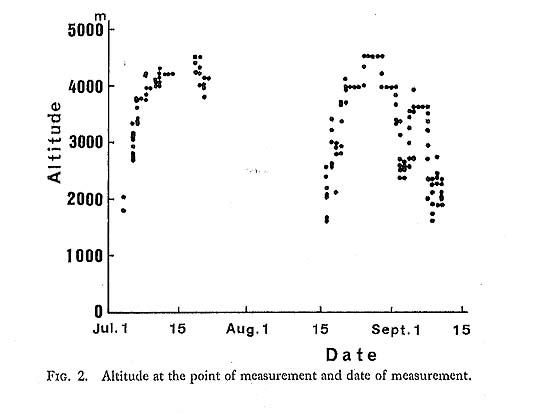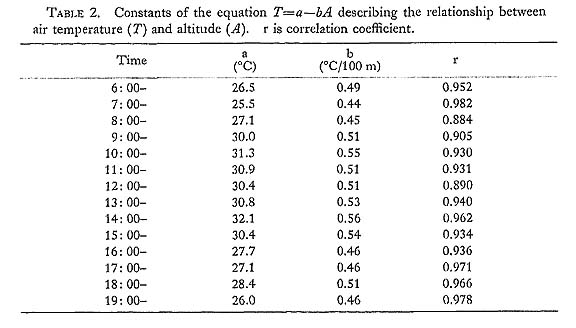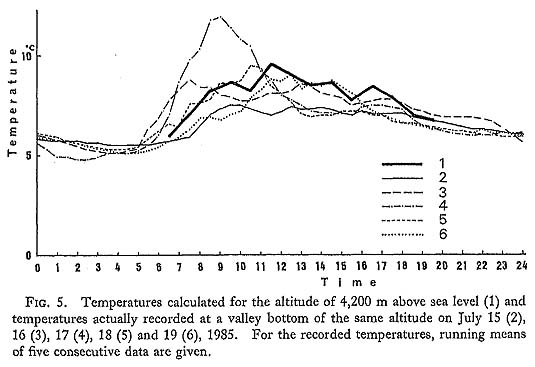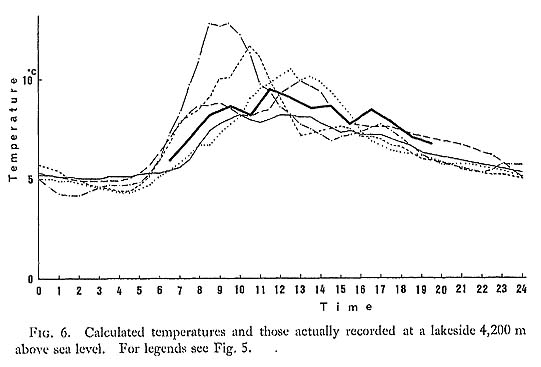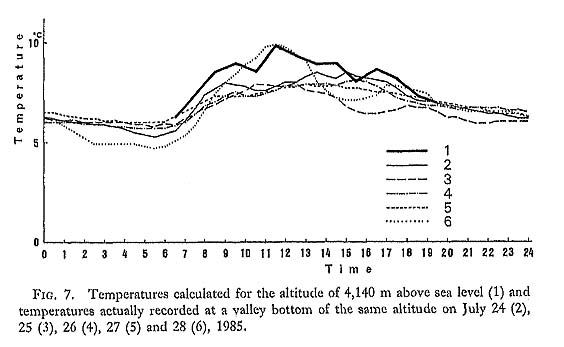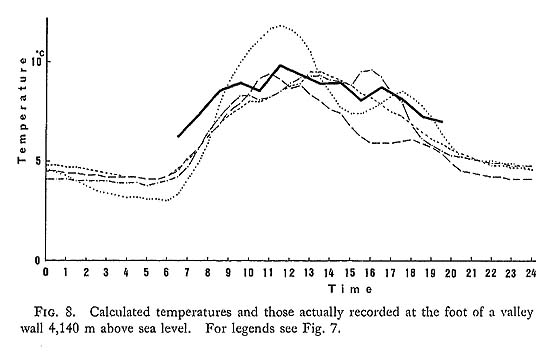DAYTIME AIR TEMPERATURE AND ITS LAPSE RATE IN THE MONSOON SEASON IN A HIMALAYAN HIGH MOUNTAIN REGION
Takao KIKUCHI and Hideaki OHBA
|
During the expedition to Nepal from early July to middle September, 1985, we performed a series of measurements of air temperature and humidity. Our purpose was to investigate general climate as an environmental factor affecting plants in a high mountain region in the Himalayas. This paper deals with a part of the results, especially the vertical gradient of air temperature. MethodsMeasurements were conducted during the expedition on the southeastern fringe of Rolwaling Himal and around Shoron Himal, an area between central and east Nepal (Fig. 1). Measurements were taken every hour or every two hours from early morning to evening during trekking or at camping sites. Air temperature was measured at a height of approximately 1.3 m above the ground by means of an Assmann's aspirated psychrometer. The altitudes of the points ranged from 1,600 to 4,500 m (Fig. 2). Air temperature was also recorded continuously by means of weekly bimetallic thermographs for continuous 4 or 5 daya at sites 4,200 m and 4,140 m above sea level.
Results and DiscussionMeasurements were conducted throughout the long period from July 4 to September 12, 1985 (Fig. 2), Nevertheless, temperatures recorded at altitudes between 3,900 and 4,000 m during this period (Table 1) showed no remarkable seasonal tendencies. Therefore, it seemed that basically similar weather conditions continued during this period, usually included in the monsoon season in east Nepal (Inoue, 1976; Joahi, 1982).
Based on this finding, temperatures measured during that period were plotted against altitude. But, since temperatures fluctuate by time of day, the data were grouped by hour for comparison purposes as shown in, Fig. 3. Fig. 3 shows a steady decrease of air temperature with an increase of altitude. A prediction of temperature (T) as related to altitude (A) is given by the following equation: T=a-bA. Such a temperature decrease is well known as the vertical temperature gradient. The constant a indicates the temperature equivalent to that at the sea level, and the constant b is known as the lapse rate. The lapse rate obtained in the present study (Table 2) was around 0.5°C/100 m, although it was slightly lower in the early morning and in the evening and slightly higher in the period from 9: 00 to 15: 00. It was a little lower than the rate of 0.6°C/100 m which has been reported for the daily minimum temperature in the post-monsoon season in eastern Napal (Ohsawa et al; 1983).
Daily temperatures at altitudes of 2,000, 3,000, 4,000 and 5,000 m above sea level were calculated based on the constants in Table 2. They are shown in Fig. 4. According to the results, usual daytime air temperatures in the alpine zone are 8 to 10°C at the lower limit (4,000 m above sea level) and as low as 3 to 5°C at the upper limit (5,000 m). Daytime temperatures similarly calculated for the altitudes of 4,200 and 4,140 m were compared to those actually recorded by means of the weekly bimetallic thermographs set at those altitudes (Figs. 5-8). Actual air temperatures fluctuated, and unusual high temperatures were occasionally recorded. However, daily daytime temperatures in the monsoon season can be estimated based on the constants shown in Table 2.
References
|


